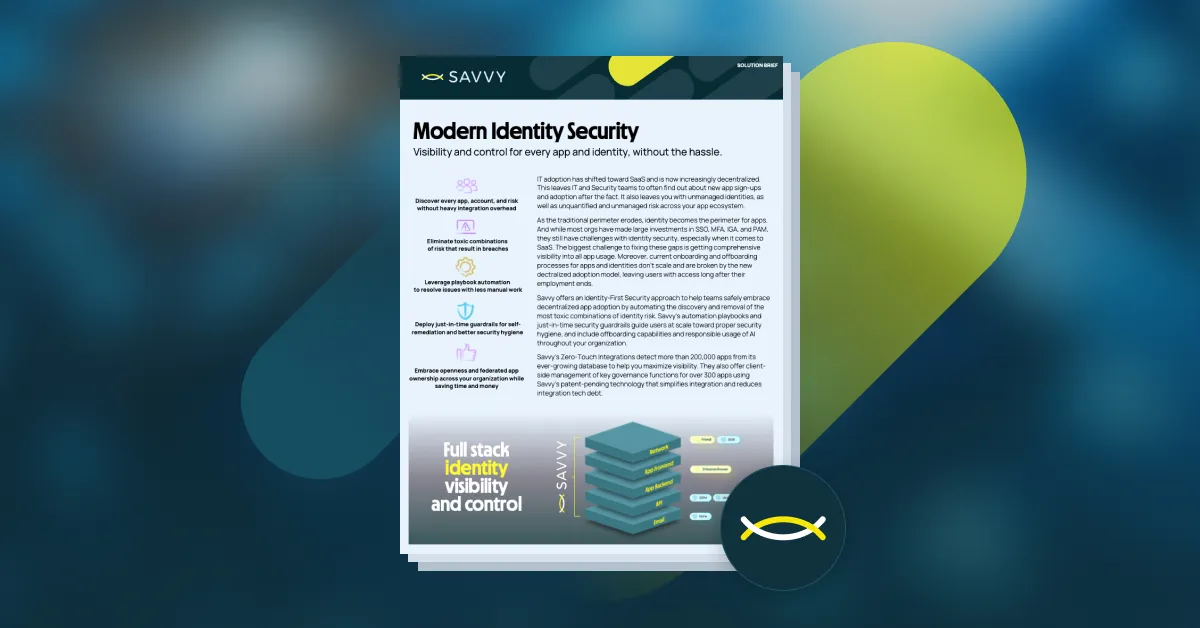As cybercriminals become increasingly sophisticated, new threats are emerging that leverage artificial intelligence and machine learning in unsettling ways. Among the most dangerous of these innovations are deepfake attacks, which manipulate media to convincingly mimic real individuals, deceiving employees into granting unauthorized access. This opens the door to significant data breaches, financial loss, and reputational damage. The risks are particularly acute in environments where digital identities, remote access, and SaaS platforms dominate. SaaS ecosystems, which rely heavily on identity verification and access management to protect data, workflows, and operational integrity, are uniquely vulnerable to the manipulation and misinformation enabled by deepfakes. Understanding these threats—and how to defend against them—is essential for safeguarding operations.
Inside a Deepfake Attack: Step-by-Step Breakdown
Imagine this: a finance employee receives a video call from the Chief Financial Officer (CFO) of their organization. The CFO appears on screen, face and voice exactly as they should be, instructing the employee to urgently authorize a financial transfer or disable specific security settings due to an “emergency.” The employee complies, thinking they’re following a legitimate order from their superior, but in reality, they’ve just handed access or assets to an attacker.
Here’s a step-by-step breakdown of how a deepfake attack like this typically plays out in the context of SaaS security:
1. Target Identification
First, attackers choose an organization and identify a key figure whose identity will be used in the attack—usually someone with authority, like an executive or IT administrator. This individual becomes the “face” or “voice” that will be used to exploit employees.
2. Data Collection
Next, the attacker gathers data on their target. They might pull from publicly available media, such as conference speeches, social media videos, podcasts, or even interviews. This data helps them train a deepfake algorithm to mimic the target’s appearance and mannerisms.
3. Deepfake Creation
Using deepfake technology, the attacker develops synthetic media that convincingly replicates the target’s face, voice, and gestures. Deepfake software has become highly accessible and can produce content that appears genuine even in high-stakes situations like live video calls.
4. Social Engineering Initiation
The attacker reaches out to an employee or team member, usually through email, phone, or even a direct video call. Posing as the executive or administrator, they convince the employee that they need immediate action on a particular issue.
5. Manipulation and Deception
During the call or message, the attacker instructs the employee to perform specific tasks, such as providing login credentials, approving sensitive transactions, or bypassing security protocols. By creating a sense of urgency, the attacker increases the likelihood that the employee will comply without verification.
6. Exploitation and Access
Once the employee acts on these instructions, the attacker gains access to the organization’s SaaS applications. This access allows them to steal data, install malware, or continue deeper infiltration, all while appearing to be a legitimate insider.
Real-World Example: Deepfake Fraud in Finance
Wiz CEO Targeted by Deepfake
Even security-focused companies are not immune. Assaf Rappaport, CEO of cloud security giant Wiz, revealed that his company was targeted by a deepfake attack. Attackers used a synthetic voice message mimicking Rappaport to trick employees into revealing their credentials. Fortunately, the attack failed because the deepfake voice didn’t convincingly replicate Rappaport, partially due to his public speaking anxiety, which subtly altered the deepfake’s tone and delivery. This incident highlights the pervasive nature of deepfake threats, even against those deeply entrenched in cybersecurity (Source: TechCrunch, Forbes).
Deepfake Fraud in Finance
Earlier this year, a finance worker at a multinational firm fell victim to a sophisticated deepfake attack. The attacker impersonated the company’s Chief Financial Officer on a video call, instructing the employee to authorize a transfer of $25 million. The deepfake video was convincing enough that the finance employee didn’t suspect any foul play, resulting in a substantial financial loss for the organization. This incident underscores the rising threat of deepfake attacks and their capacity to exploit even well-secured businesses (source: The Australian).
The Growing Impact on SaaS Security and Identity Verification
The implications of deepfake technology go beyond financial loss. Deepfakes erode trust in video and audio verification methods commonly used in SaaS environments. As these tools become more accessible, attackers will find new ways to bypass traditional identity checks, jeopardizing the integrity of organizations’ most valuable digital assets.
Building a Resilient SaaS Ecosystem with Identity-Centric Security Measures
A resilient SaaS ecosystem begins with strong identity management practices that counteract the risks of deepfake attacks. By placing identity verification, credential integrity, and access oversight at the heart of SaaS security, organizations create a secure foundation that minimizes vulnerabilities. Continuous vigilance, proactive measures, and adaptive security help organizations stay ahead of deepfake threats. As deepfake technology becomes more accessible, a proactive approach to identity and access management is essential for long-term resilience. Organizations prepared to confront these challenges today can protect their data, their people, and their reputation in the face of evolving digital threats.
While deepfake technology is advancing rapidly, Savvy’s security solutions provide proactive defenses to mitigate its impact on organizations’ SaaS environments:
- Identify Apps Without MFA Configuration: Deepfake attackers may exploit weak authentication processes to gain access. Savvy continuously monitors SaaS apps for the absence of Multi-Factor Authentication (MFA) and initiates automated workflows to enforce compliance with organizational policies. This ensures that even if an attacker uses deepfake tactics to bypass identity verification, the robust secondary authentication layers significantly reduce the risk of unauthorized access.
- Just-in-Time Security Guardrails: Deepfake attackers often manipulate employees into compromising actions. Savvy’s Just-in-Time (JIT) security guardrails provide real-time, contextual prompts when sensitive actions are attempted. By ensuring that unusual or high-risk interactions are verified through additional checks, these guardrails help employees recognize and resist deepfake-driven social engineering, safeguarding critical operations without disrupting workflows.
- Detect SSO Bypass and Direct Logins: Attackers leveraging deepfakes might attempt to bypass Single Sign-On (SSO) to avoid enhanced authentication layers. Savvy continuously monitors for direct logins to SaaS apps, ensuring all user activity routes through the secure SSO system. This enforces stricter access controls, preventing deepfake-driven unauthorized access and maintaining a secure and auditable environment.
- Detect Dormant Accounts and Automate Offboarding: Dormant accounts are a known target for attackers employing deepfakes to impersonate former employees. Savvy identifies inactive accounts and automates the offboarding process, ensuring that no lingering credentials can be exploited. By promptly removing unnecessary access, Savvy minimizes the attack surface, making it difficult for deepfake attackers to leverage dormant identities.
- Identify Weak, Reused, or Compromised Credentials: Deepfake attackers may attempt to exploit known credential weaknesses. Savvy’s real-time visibility into password health ensures that weak, reused, or compromised credentials are promptly identified and strengthened. This reduces the potential for deepfake-facilitated credential theft and helps maintain a high standard of credential hygiene across the organization.
Savvy’s Approach to Deepfake Risk Mitigation
Deepfakes represent a rapidly evolving threat, particularly for organizations that rely on SaaS apps and remote interactions. By understanding how these attacks work and putting strong verification measures in place, companies can protect their assets and avoid falling victim to this new form of digital deception. Investing in robust defenses now is essential to staying secure as cybercriminals continue to innovate.
Savvy supports organizations by providing robust identity-first solutions tailored to protect SaaS environments against deepfake threats. With tools that enhance credential security, enforce MFA, and monitor identity integrity in real-time, Savvy offers a comprehensive approach to identity protection. Just-in-time guardrails and adaptive security measures help users make secure decisions at critical moments, reducing the chances of deepfake manipulation. By maintaining continuous visibility and governance over SaaS access, Savvy empowers organizations to manage identity risks confidently. Connect with Savvy for a deep assessment of your SaaS environment and see how identity-first security can strengthen your defense against deepfake threats.



